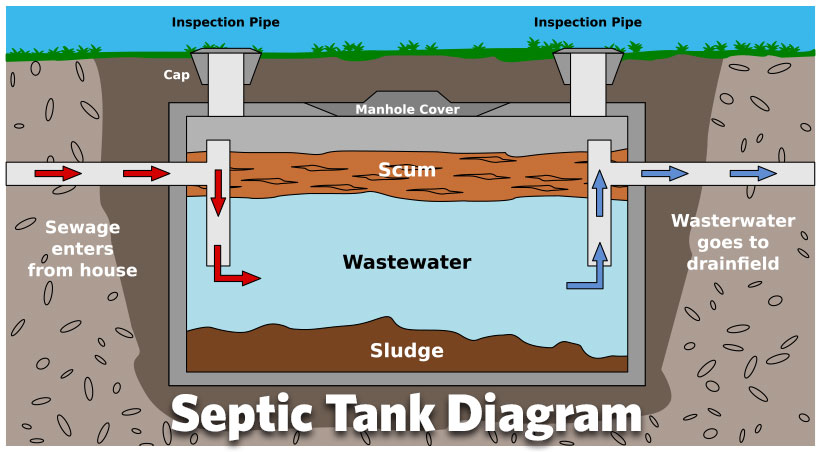System Description
A septic tank system uses natural processes to treat and dispose of the wastewater generated in your home.It typically consists of a septic tank and a drainfield, or soil absorption field. The septic tank provides the first step in treatment. As wastewater flows into the tank, the heavier solids settle to the bottom to form a sludge layer, and the lighter solids, greases, and oils float to the top to form a scum layer. The liquid wastewater (effluent) from the tank flows into gravel-filled trenches in a typical drainfield where it is distributed via perforated pipes and then treated by the natural soil system. The diagram below shows the components of a typical septic system.

System Operation
The septic tank provides some biological treatment of the sludge and scum layers that accumulate there.The majority of treatment occurs in the drainfield where the effluent enters the soil and is treated as it percolates to the groundwater. The soil acts as a biological and physical filter to remove harmful substances, including disease-causing bacteria and viruses, toxic organics and other undesirable wastewater constituents remaining in the effluent.
Outlet filters or baffles are located in the tank and are designed to prevent the sludge and scum from flowing into the drainfield. If the tank is not pumped regularly to remove the accumulated solids, the tank will fill with sludge and the solids will be washed out into the drainfield, or clog the outlet filter. If solids reach the drainfield or clog the outlet filter, they will quickly clog the soil and eventually lead to system failure.
